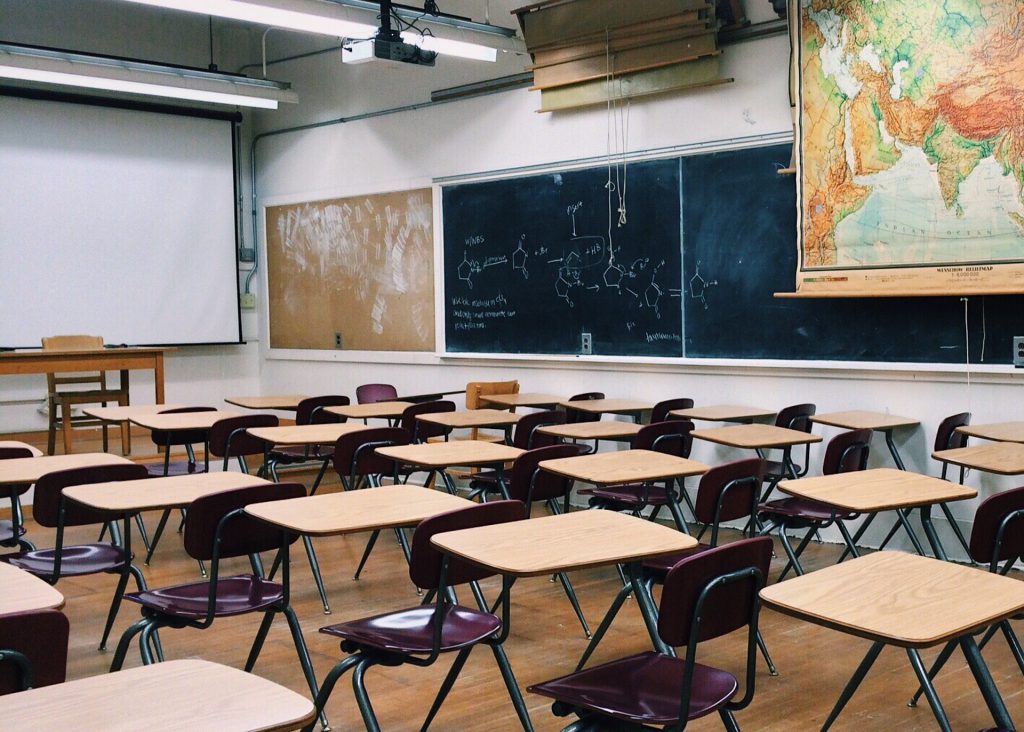State Data on Student Transfers Missing
MPS suspects private schools push students out after getting them counted for state aid.
Wisconsin’s Department of Public Instruction (DPI) only knows what school students in the state are attending at two points in time: on the third Friday of September and again in January, which creates data used for the purposes of distributing state funding and creating the state report cards. But for the rest of the school year, private and public schools are under no mandate to tell DPI what students are attending their schools. Schools must ultimately report student attendance, so the data is out there but not easily retrieved.
For Milwaukee Public Schools (MPS) board director, Marva Herndon, this lack of data is a major frustration as she tries to confirm a long-held belief that some private schools hang on to students through the third Friday count in order to receive state aid for those students only to push them back into the public schools for the rest of the academic year.
“I could never get the data together,” says Herndon who has been trying for years to figure out just how large this problem is. “It has been a common statement from district schools” that this is happening,” she notes. “I ran into parents who have experienced it.”
Chris Bucher, DPI communications officer, says it has collected no data on this issue. “This is not something our agency has investigated. So, we don’t really know how big or small of a problem this is.”
Herndon held several meetings with a round table of MPS officials over a two-year period, but put her efforts on hold once the pandemic hit. She is again renewing her efforts. “I got together with Matthew Chason, [MPS director of accountability and efficiency] and told him what I needed,” says Herndon, including meetings where MPS superintendent Keith Posley joined the discussion.
Posley confirms the district’s efforts: “We have been working on this with Director Herndon… Matt Chason as well as student services.”
“Anecdotally, we have some private schools in the city who, for the purposes of maintaining a good count for their aid, keep students for third Friday, and then coach or counsel or flat out have the kids leave their school and do the dumping into MPS,” says Chason. “That is very hard to prove or test that anecdotal information without the data that this student came from this school on this date.” The system knows that the students are now enrolled at MPS, but “we don’t know where they were enrolled before,” Chason adds.
Herndon says she discussed this issue with then-state superintendent Tony Evers before he became governor. “And he indicated at that time that MPS always made the statement that there were a lot of kids coming back after the third Friday but we don’t have data to stand behind it… DPI should have the data when a student leaves a district and goes to another… I even had a discussion with [current State superintendent] Jill Underly. “It didn’t seem too hard to her; it sounded workable and reasonable” (to collect this data), Herndon said. But nothing has come of her efforts.
Having a single robust electronic student data reporting and storage system would benefit education across the state, says Chason, who points to Texas as an example. The Texas system has its limitations, but least it is not the hodgepodge of electronic systems used across Wisconsin.
In 2013, DPI was ready to sign a contract with Minnesota-based Infinite Campus to create a Texas-like system, but a losing competing provider, Skyward of Stevens Point, threatened to pull its entire operations out of Wisconsin if they didn’t get at least a piece of the action.
So DPI backed off and now allows any electronic data system so long as schools give DPI the information it needs to allocate state funds and produce the state report cards.
For now, school districts usually don’t know if a student has transferred out of their school system until a receiving school asks for student records. That often means bundling up a paper folder and shipping it off to the new school. State law requires that schools must send the student records to the receiving school by the next working day. But “there is not a current requirement in state law for a private school to notify a previous school of a new student’s enrollment or request the student’s records,” says Bucher.
“Wouldn’t it be nice if we, like many metropolitan cities can do, to take a look that… they are presently attending a private school,” says Chason. “We would like to send them a communication which says, ‘Why don’t you give us another look at MPS. Here are some programs that we think you would love. We could support you and your family.’”
While exit interviews might be beneficial in improving a school’s services to its families, efforts to entice students back to its schools would be a good reason why a receiving school would not want to ask for student records right away.
All this shuffling around of records and students does not impact the majority of Wisconsin’s school districts, where teachers get a list of students in spring who will be in the teacher’s classroom in fall. Hardly any students move. However, in urban and more transitory population areas, major swings in the classroom population can take place even during the regular school year. “MPS sees a high turnover rate through the entire school year including after the third Friday,” says Chason.
Students change schools for a number of reasons. Allegations are that special needs students, in particular, leave private schools to return to their public schools because the private schools simply cannot provide necessary services. Whether they are pushed out or parents come to a realization that the school is not a good fit for their children is difficult to measure.
That might sound like a problem that an advocacy organization which provides support for many special needs students would have a handle on, but Bob Poeschl, communication director for Disability Rights Wisconsin, based in Monona, a suburb of Madison, could only offer this: “We don’t have a lot of information internally that suggest that there is an issue… We’re not getting calls.”
K-12 Education
-
MPS Training in Science of Reading Going Poorly
 Nov 23rd, 2025 by Terry Falk
Nov 23rd, 2025 by Terry Falk
-
The Fear Factor at MPS
 Nov 11th, 2025 by Terry Falk
Nov 11th, 2025 by Terry Falk
-
MPS Reaching Out to Community
 Nov 2nd, 2025 by Terry Falk
Nov 2nd, 2025 by Terry Falk























What MPS teachers have been calling the “Third Friday Dump” by choice schools has been going on for decades. This information could be easily gathered but probably, for political reasons, was not done. The issue could be resolved by sending State Aid to schools on a two month basis rather than give schools a full years reimbursement for tuition. There should be a rule that once a family selects a school, this is their school for the school year with no opportunity for the family to move the student or the school to push the student out during the school year. High student mobility it a major factor in low achievement.